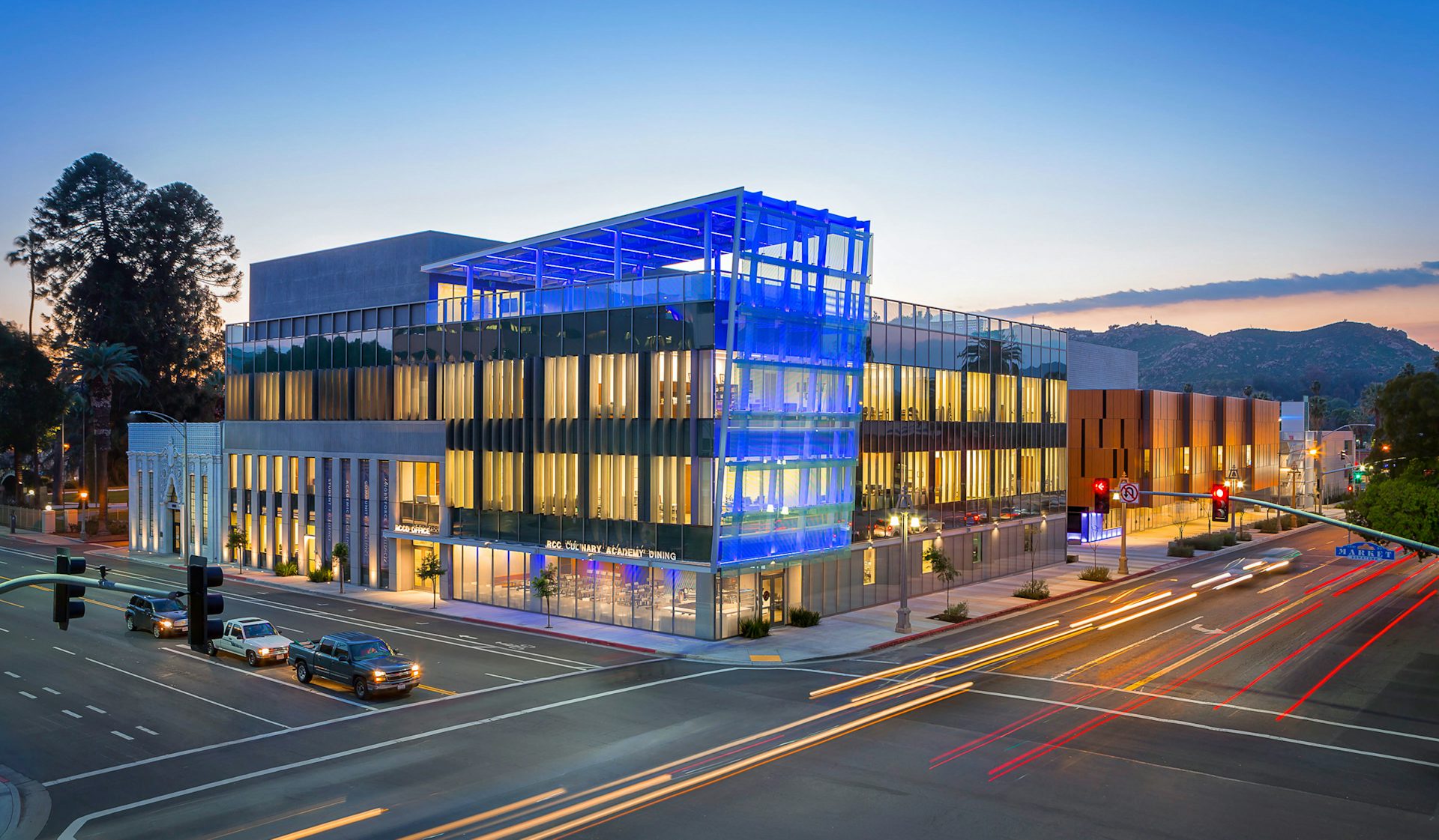Riverside Community College District Centennial Plaza
Riverside, California
A community college mixed-use project features culinary arts institute and a school for arts
Centennial Plaza is a block-long project developed by the Riverside Community College District as a destination connecting higher education and the arts in downtown Riverside. The development incorporates three different buildings with complimentary uses, plus a four-story parking garage, addressing the district’s vision to revitalize a neglected part of the city.
The centerpiece is the four-story, 60,000-square-foot Culinary Arts Academy and District Office (CAADO), which puts the culinary school front and center. The school covers the ground floor of the building, including a bakery, a 116-seat restaurant open to the public, a large production kitchen, a kitchen for basic classes and a demonstration kitchen.
The second and third floors of the building provide badly-needed office space for the district, as well as the Chancellor’s suite. The rooftop is a shaded deck, with gardens and spaces for events and performances. The building is clad in insulated glass to maximize natural light and open the activities of the school to the public. A shingled glass tower anchors the design, creating shading and an iconic beacon that lights up at night. Street-facing façades use louvres, solar canopies, spandrel glass and fritted glass to control and maximize natural light while conserving energy. The roof garden is designed to reduce stormwater runoff and features drought-resistant plants.
The complex also includes the Coil School for the Arts, a new home for Riverside City College’s renowned music program. Designed around acoustics and a high-quality music experience, the center includes a recording studio, choir room, a piano lab and percussion studio, over 30 practice rooms and a tunable-acoustics 450-seat concert hall.
The third building is a 1920s historic bank building repurposed into the Center for Social Justice and Civil Liberties. The interior was gutted to make room for gallery and exhibition space on two floors, as well as new mechanical systems and an elevator. The Spanish baroque façade, which had been covered up for years, was completely restored, providing a strong connection to the city’s rich history.














































